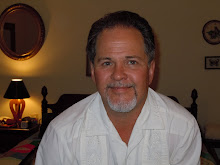Tuesday, May 23, 2006
The Director's Craft
From now on when I am watching a movie, I am going to call the shot of faces with the top of the head cut off, the Hannibal effect. When I see that NYPD Blue pioneered jittery hand-held, still, jerk to the side, zoom shot I am going to call it the Parkinson Effect. When I see shot after shot looking up from the ground or the mid chest, I am going to call it the Blair Witch Effect. There are too many more to list here, and who would want to? Who would want to think of all the bullshit camera shots TV and film directors are using who just don't know better. They just don't know anything else, like the history of their craft. Camera shots are in my estimation the foundation upon which a movie is laid. Camera shots by themselves can tell a story, create suspense, or simply entertain with no dialog what-so-ever. I would think maybe they are teaching this in film school at USC or UCLA. I have a K-12 Teaching Certificate, but I have not set foot in a public school in years. You would probably be labeled a sex offender or a pervert if you tried to observe our schools in their current state. I would like to know what is driving this trend in the film industry. Again the question is posed, as in my previous post, we can either go with our history, the cultural history of the human being, or we can choose cyberworld. Cyberworld must be the choice where camera shots don't really matter. Forget that the camera is supposed to be the perspective of the audience. Like Roger Ebert has said, often times it feels like the director and actors are trying to yank your chain. Why must we speed action up so much and move the camera around? Do not human beings merit the respect of their ten dollar tickets to give them something remotely human in nature? Is is meant to disguise something? Bad acting maybe? Bad dialog. Who would know if the cast never gets a chance to actually practice the art of acting. In that aesthetic actors create emotional responses. They interject themselves into a scenario as if it were real life and let their emotional responses do the work. That is interesting to watch, when the camera is not moving all over the place. Maybe the digital age has created this void of technique, an oversight of the true craft of movie-making. Maybe staring up at Tom Cruise's mug with the top of his head cut off scene after scene after scene is supposed to mean something. Maybe the top of his head doesn't really exist and got chopped off in one of the great action scenes in MI3. Maybe they used Renderman to glue it back on in the scenes were you can see his head. The love scenes though I think would be augmented by the full shot of their cabezas! Maybe the director thinks the eyes and the mouth are all that are needed to portray an intimate, emotional scene. "Forget the rest of the head." What excessive camera motion does is proclaim, "Look at me the camera man!" I am running around these great actors like a little nerd, with no wisdom or forethought on where I am going to place my expensive camera. A dolly perhaps? A crane? Maybe someplace that takes a little more thought than plopping it down on the ground pointed up the noses of our well-paid actors. it is stupid. We have enough ADD and neurosis in our world without the movies exaggerating it. We go to the movies to escape, to bond, to hope, to feel good, and we pay for it. I don't go to the movies to be cluster fucked by a childish director that hasn't studied his craft. If it is digital that is producing these effects, then the grand old days of Cinemascope should return triumphantly. Screw the little camera, the midgets and widgets, the miniscule IPod palm pilot, the trinkets of the cyberage. Show me something that has soul, meaning, history, and humanity, not a brazen stab at an unknowing future.
Subscribe to:
Post Comments (Atom)

No comments:
Post a Comment